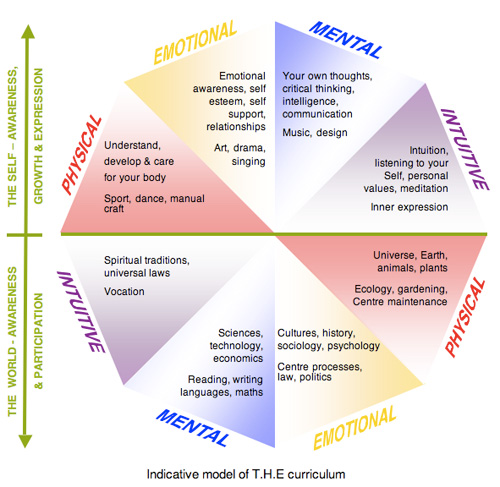[alert color=red align=center]A lack of Sympathy outside of the classroom will result in a lack of Empathy inside of the classroom. ~ Jermyn Shannon El[/alert]
Juan Cole, a historian and a scholar of the Middle East, posted a piece on his “Informed Comment” blog titled “How America has failed African American Youth, by the Numbers.” One area he specifically addresses is education. There are startling statistics showing that America needs to stop failing black youth in the area of education.
In each of the statistics that will be pointed out, the problem is that schools are institutions and as such are prone to structural racism. While the problems and solutions may be oversimplified in a short piece like this, it is important to note that educational racism is very real. Fortunately, however, the solutions are just as real.
From “Special Ed to Turnaround Schools”, America’s public education system has tried everything in the book to offer the best education for its diverse student population. The outcome of these efforts haven’t been favorable, especially for minority youth.
In comparison to white children, black children are more than seven times as likely to be persistently poor, seven times as likely to have a parent in prison, four times as likely to be placed in a juvenile correctional facility, and just as likely to use drugs, yet more than seven times as likely to be placed in residential placement for these same drug offenses. Mass systematic incarceration of poor people of color is a fact and there is an obvious, urgent need for reform of our criminal justice system. (Look at the Black and White Report). Huffington Post – read full source
Recently I was invited to attend the LEARN Conference as a panelist at the University of Penn in Philadelphia to share my experience and research on varying educational outcomes for students of different races and discuss possible solutions to the problem. The conference will take place on March 1st, 2014, with the goal to directly engage the issue mobilizing most school reform movements, the disparity of educational outcomes between white students and racial minorities, and to bluntly discuss the causes of this phenomenon and debate the efficacy of different policies aimed at combating this injustice.
One of the topics I intend to address is the ‘Empathy Gap’ on academic achievement, and how empathy negatively impacts pedagogy as much as it does to improve learning outcomes. The controversial debate that deserves more discussion involves Achievement Gap or Empathy Gap?: Cultural Values and the Opportunity to Succeed. From my perspective, this translates to empathy learning vs holistic teaching.
[hr style=dashed-line margin_top= margin_bottom=]An excerpt from Edutopia Blog
http://www.edutopia.org/blog/empathy-lesson-plan-life-skill-joe-hirsch
Cooperative Learning: An Empathy Lever, written by Joe Hirsch
In cooperative learning, students work together, think together and plan together using a variety of group structures designed along an instructional path. This dynamic learning model breaks with the dusty forms of frontal teaching that often create classrooms of “lonesome togetherness” — students who may sit together but live worlds apart. Cooperative learning creates what Daniel Goleman calls “cognitive empathy,” a mind-to-mind sense of how another person’s thinking works. The better we understand others, the better we know them — pointing toward (among other virtues) greater trust, appreciation and generosity.
But wholesale adoption of cooperative learning does not automatically yield the kind of results that educators want and students need. Dispatching students into “groups” with the hopes they’ll become more empathetic carries the same potential for success as trying to hit a dartboard while blindfolded — maybe a few lucky strikes, but not much more. To harness the power of cooperative learning as a tool for building empathy, teachers need a specific strategy, a best practice that works — in real classrooms with real students. Fortunately, one exists. It’s called jigsaw.
The Jigsaw Classroom: Goals and Execution
Created in 1971 by psychologist Elliot Aronson to defuse his volatile fifth grade classroom, the jigsaw method has a long track record of successfully reducing classroom conflict and increasing positive educational outcomes. As an empathy builder, it also opens doors of opportunity.
In jigsaw classrooms, lesson content is divided into self-contained chunks and assigned piece by piece to different groups of learners. Each group — strategically arranged to reflect differences in learning style, prior knowledge or socio-economic makeup — simultaneously studies a different but complementary piece of the lesson. When this “mastery” round is complete, every student should possess unique knowledge of one slice of the lesson. Groups are then reshuffled to form new units that draw a member from each of the mastery teams. Working in these newly minted teams of “experts,” each student shares a brand new piece of content with team members who only now learn that particular lesson segment. When every group has finished sharing information, checking for understanding and re-teaching complicated points, the jigsaw activity is over.
http://www.edutopia.org/blog/empathy-lesson-plan-life-skill-joe-hirsch
[hr style=dashed-line margin_top= margin_bottom=]WHAT IS YOUR PERSPECTIVE OF THE IMAGE BELOW?

Teaching perspectives is the best way to learn about a people and only when you teach perspectives can you teach creativity because creativity comes from exposure. Only when you are creative can you imagine yourself in the shoes of someone different from you. Perspectives and creativity engender empathy – much needed in this word.
Raghava KK from Coloring Outside the Lines-A National Geographic Video





